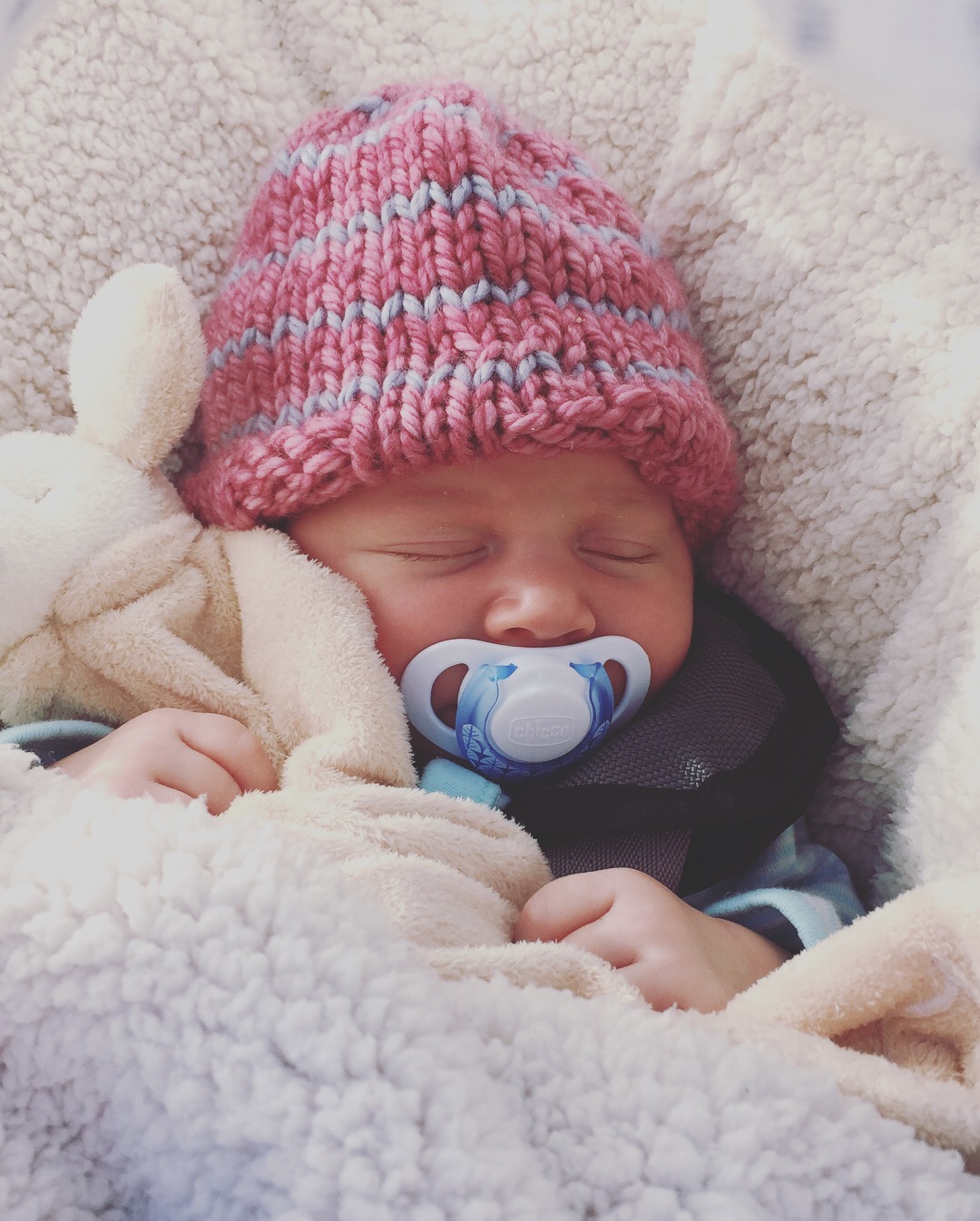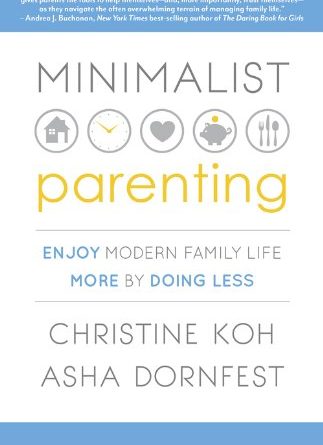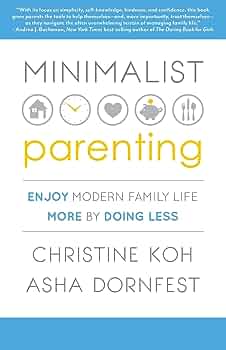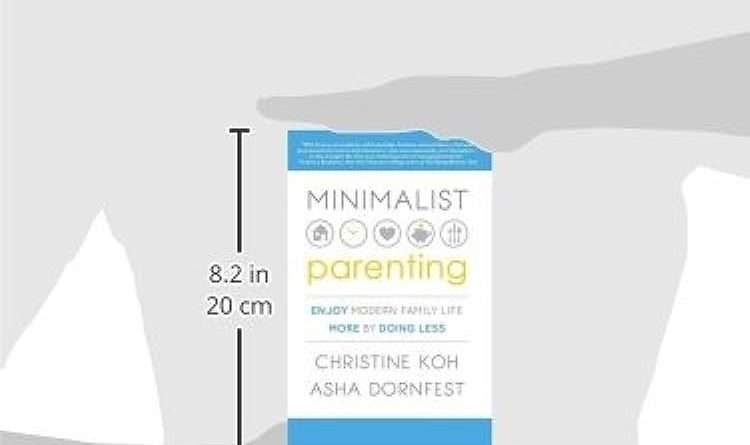
Welcome to Nelly’s Life, where minimalism and veganism converge to create a life that is not just lived but truly cherished. As a mother of three daughters and a dedicated training nutritionist, I understand the challenges of juggling a busy life all too well. That’s why I am here to share my personal experiences and offer practical advice on finding balance with a newborn. Through the power of intentional living, I have transformed my life from one burdened by excess and unhappiness to a life filled with purpose, joy, and wellness. Join me on this transformative adventure as we explore the benefits of minimalist parenting, discover the world of veganism, and embrace choices that align with our values. At Nelly’s Life, we believe in creating a vibrant community of like-minded individuals who are seeking a path to a more intentional and compassionate life. Let’s embark on this journey together and make conscious choices that enhance not only our own health but also the well-being of our planet.

Table of Contents
Benefits of Minimalist Parenting
Less stress and overwhelm
As a parent, it’s easy to feel overwhelmed and stressed with the constant demands of raising a child. However, minimalist parenting offers a solution to this common struggle. By simplifying your life and reducing clutter, you create a more peaceful and organized environment. This, in turn, alleviates stress and helps you focus on what truly matters – spending quality time with your child and nurturing their growth and development.
More time and energy
One of the main benefits of minimalist parenting is the gift of time and energy. By minimizing distractions and unnecessary commitments, you free up more time to spend with your child. Instead of being consumed by the never-ending cycle of cleaning, organizing, and managing possessions, you can dedicate your energy to creating meaningful experiences with your little one. This allows for deeper connections and a stronger bond between parent and child.
Less clutter and more space
Minimalist parenting is all about letting go of excess and creating a clutter-free environment. This not only makes your home more aesthetically pleasing but also provides a sense of calm and tranquility. With fewer toys, clothes, and baby gear, you’ll have more space to move around and play with your child. This open and airy environment promotes creativity, exploration, and a sense of freedom.
Focus on what truly matters
In a world filled with endless choices and distractions, it’s easy to lose sight of what truly matters when it comes to parenting. Minimalist parenting encourages you to prioritize your child’s well-being and focus on their essential needs. By eliminating unnecessary material possessions and commitments, you can direct your attention to the moments that hold the most value – building connections, fostering emotional growth, and nurturing your child’s development.
Principles of Minimalist Parenting
Simplicity
One of the core principles of minimalist parenting is simplicity. This involves simplifying every aspect of your life – from your possessions to your daily routines. By embracing simplicity, you can reduce stress, create a sense of calm, and create a space that supports your child’s growth and exploration.
Intentionality
Being intentional in minimalist parenting means making purposeful and conscious choices that align with your values and goals. This includes carefully selecting the items you bring into your home, creating meaningful routines, and prioritizing activities that support your child’s development and well-being.
Mindfulness
Mindfulness is a key principle of minimalist parenting, as it encourages you to be present in the moment and fully engaged with your child. By practicing mindfulness, you can savor the small joys of parenting, cultivate a deep connection with your child, and foster a sense of gratitude and appreciation for the present moment.
Prioritization
Minimalist parenting involves prioritizing the things that truly matter to you and your child. This means letting go of non-essential commitments and possessions to create space for what brings you joy and aligns with your values. By prioritizing, you can focus on the activities and experiences that have the greatest impact on your child’s well-being and development.
Self-care
Self-care is an important principle of minimalist parenting that emphasizes the importance of taking care of yourself as a parent. By prioritizing your own well-being, you can show up as your best self for your child. This may involve setting boundaries, seeking support from others, and making time for activities that recharge and rejuvenate you.
Creating a Minimalist Baby Registry
Essential baby items
When creating a minimalist baby registry, it’s important to focus on the essential items that your baby will truly need. This includes items such as a crib or bassinet, stroller, car seat, diapers, and clothing. By prioritizing these essential items, you can avoid unnecessary clutter and ensure that you have everything you need to care for your baby.
Avoiding unnecessary products
In minimalist parenting, it’s important to resist the urge to accumulate unnecessary baby products. Many items on the market may seem appealing, but they often end up cluttering your home and rarely get used. By carefully evaluating each item and considering its necessity, you can avoid spending money on products that will only contribute to clutter.
Opting for multi-functional items
One way to minimize the number of items on your baby registry is to choose multi-functional products. For example, a high chair that converts into a toddler chair or a baby carrier that can be used in multiple positions. By opting for multi-functional items, you can reduce the amount of space needed to store these items and save money in the long run.
Choosing sustainable and eco-friendly options
In line with the principles of minimalist parenting, it’s important to consider the environmental impact of the baby items you choose. Look for products that are made from sustainable materials, free of harmful chemicals, and produced by companies that prioritize ethical manufacturing practices. By choosing eco-friendly options, you can minimize your carbon footprint and teach your child the importance of sustainability from an early age.
Exploring second-hand and borrowing options
Another way to create a minimalist baby registry is to explore second-hand options and borrowing from friends or family. Many baby items, such as clothing, toys, and furniture, can easily be passed down or purchased second-hand at a fraction of the cost. By embracing second-hand options, you can save money, reduce waste, and avoid contributing to unnecessary consumption.
Decluttering and Organizing Baby’s Space
Applying the KonMari method to baby items
When decluttering your baby’s space, the KonMari method can be a useful tool. This method, created by Marie Kondo, involves decluttering by category and keeping only the items that spark joy. Apply this method to your baby’s belongings by gathering all similar items together and evaluating each one individually. Keep only the items that truly bring you and your child joy and let go of the rest.
Creating a minimalistic nursery
A minimalistic nursery is all about simplicity and functionality. Choose a neutral color palette, minimal decor, and functional furniture that serves a purpose. Avoid excessive decorations or furniture that takes up unnecessary space. Create a calm and inviting environment that promotes restful sleep and fosters a sense of tranquility.
Organizing baby’s essentials
To keep your baby’s essentials organized, use storage solutions such as baskets, bins, and shelves. Designate specific spaces for diapers, clothing, toys, and other items. This not only helps you keep everything in its place but also allows you to easily find what you need when you need it. Keep your organization system simple and intuitive, so it’s easy to maintain.
Utilizing storage solutions
Maximize space in your baby’s room by utilizing storage solutions that make the most of vertical and underutilized areas. Wall shelves, hanging organizers, and under-bed storage can help keep your baby’s items organized and out of the way. Utilize hooks and hangers to hang items such as clothing and bags, saving valuable drawer and closet space.
Maintaining a clutter-free environment
Once you have decluttered and organized your baby’s space, the key is to maintain a clutter-free environment. Encourage a culture of tidiness by putting items away after use and teaching your child the importance of tidying up. Regularly assess your baby’s belongings and let go of items that are no longer needed. By keeping your baby’s space clutter-free, you promote a sense of calm and ease in your home.
Building a Minimalist Routine
Establishing a simple feeding and sleeping schedule
A minimalist routine begins with establishing a simple and predictable feeding and sleeping schedule for your baby. By creating a routine that follows your baby’s natural rhythms and needs, you can promote better sleep and a sense of security. Keep meal and nap times consistent, and allow for flexibility when necessary.
Embracing baby-led weaning
When it comes to introducing solid foods, a minimalist approach is to embrace baby-led weaning. This means allowing your baby to explore and self-feed a variety of age-appropriate foods from the start, rather than relying solely on purees. Baby-led weaning encourages independence, fosters healthy eating habits, and minimizes the need for extra gadgets and equipment.
Implementing a minimalist approach to baby’s activities
In minimalist parenting, it’s important to be intentional with the activities you engage in with your baby. Focus on quality over quantity and choose activities that promote their development and growth. This may include sensory play, outdoor exploration, and interactive reading. By being mindful of the activities you choose, you can create meaningful moments that promote bonding and learning.
Establishing a simplified cleaning routine
A minimalist routine also includes a simplified cleaning routine. Rather than spending hours on daily chores, identify the essential cleaning tasks that need to be done to maintain a clean and organized home. Create a cleaning schedule that fits your lifestyle and delegate tasks when possible. By streamlining your cleaning routine, you free up time for more enjoyable activities with your child.
Incorporating self-care into the daily routine
Self-care is an integral part of a minimalist parenting routine. Make time for self-care activities such as exercise, meditation, or hobbies that bring you joy. Incorporate self-care into your daily routine by dedicating a few minutes each day to activities that recharge and rejuvenate you. By taking care of yourself, you can show up as your best self for your child.
Parenting Mindfully
Being present and attentive
One of the fundamental principles of minimalist parenting is being present and attentive to your child’s needs. Mindful parenting involves actively engaging with your child, listening to their cues, and responding in a nurturing and loving way. By being fully present in the moment, you can create deeper connections and enjoy the simple joys of parenting.
Fostering connection and bonding
Minimalist parenting puts a strong emphasis on fostering connection and bonding with your child. Take the time to engage in meaningful one-on-one activities, such as playtime, reading, or simply talking and cuddling. By nurturing your relationship and creating moments of connection, you build a strong foundation of trust and love with your child.
Practicing conscious discipline
Conscious discipline is an approach to parenting that emphasizes teaching and guiding your child rather than using punishment or rewards. It involves setting clear boundaries, modeling positive behavior, and helping your child understand the consequences of their actions. By practicing conscious discipline, you can foster a respectful and loving relationship with your child based on mutual understanding and empathy.
Embracing slow parenting
In our fast-paced and technology-driven world, slow parenting is a counterbalance that encourages a more relaxed and unhurried approach to parenting. Slow parenting involves slowing down, cherishing the present moment, and allowing for unstructured free play. By embracing slow parenting, you create a nurturing environment for your child’s growth, creativity, and imagination.
Promoting independent play
Minimalist parenting promotes independent play as a way for children to develop their imagination, problem-solving skills, and independence. Create a dedicated space in your home where your child can engage in independent play and explore their interests. Provide open-ended toys that encourage creativity and imagination, and give your child the freedom to explore and discover on their own.

Minimalist Parenting on a Budget
Prioritizing essential purchases
When practicing minimalist parenting on a budget, it’s important to prioritize essential purchases. Focus on the items that are necessary for your child’s well-being and development, and avoid spending money on non-essential items. By prioritizing, you can allocate your budget to the things that truly matter and avoid unnecessary expenses.
Utilizing hand-me-downs and shared resources
Hand-me-downs and shared resources are valuable assets when practicing minimalist parenting on a budget. Reach out to friends and family members who may have baby items they no longer need and are willing to pass on to you. Additionally, join local parenting groups or online communities where parents exchange or sell gently used baby items at a discounted price.
Investing in quality over quantity
When making purchases for your child, it’s important to invest in quality items that will last. While it may be tempting to opt for cheaper options, they may not withstand the test of time and end up costing you more in the long run. By choosing quality items, you can minimize waste and ensure that your purchases serve your child well for an extended period.
Finding affordable alternatives
There are often affordable alternatives to expensive baby products if you are willing to do some research. Look for budget-friendly options that still meet your child’s needs without compromising on quality or safety. Explore different brands, read reviews, and compare prices to find the best value for your money.
Creating a minimalist, low-cost nursery
Creating a minimalist, low-cost nursery is achievable with some creativity and resourcefulness. Instead of investing in expensive furniture, consider repurposing items you already own or exploring second-hand options. Create DIY decor or find affordable wall art to personalize the space. By rethinking your approach to nursery design, you can create a beautiful and functional space without breaking the bank.
Sustainable Parenting Practices
Choosing reusable and eco-friendly products
Sustainable parenting practices involve consciously choosing reusable and eco-friendly products for your child. Opt for cloth diapers instead of disposable ones, reusable food pouches instead of single-use plastic ones, and glass or stainless-steel bottles instead of plastic. By reducing waste and choosing reusable options, you can minimize your environmental impact and teach your child the importance of sustainability.
Cloth diapering and eco-friendly diapering options
Cloth diapering is a sustainable and cost-effective alternative to disposable diapers. With advancements in cloth diaper technology, modern cloth diapers are easy to use, wash, and maintain. If cloth diapering is not feasible for your lifestyle, explore eco-friendly disposable diaper options that are made from sustainable materials and free of chemicals.
Embracing natural and organic baby care
Natural and organic baby care products are a healthier and more sustainable choice for your child. Look for skincare products that are free of harmful chemicals, artificial fragrances, and unnecessary additives. Opt for natural ingredients such as organic oils and plant-based extracts. By choosing natural and organic baby care, you can protect your child’s delicate skin and reduce exposure to harsh chemicals.
Reducing waste and embracing a zero-waste lifestyle
Reducing waste and embracing a zero-waste lifestyle is a key aspect of sustainable parenting. This involves minimizing single-use items, such as disposable wipes and plastic packaging, and instead opting for reusable or package-free alternatives. Encourage recycling and composting in your home, and teach your child about the importance of reducing waste and caring for the environment.
Teaching children about sustainability
As a sustainable parent, it’s important to teach your child about the principles of sustainability from an early age. Engage in age-appropriate conversations about recycling, conservation, and caring for the planet. Encourage your child to be mindful of their consumption habits and involve them in sustainable practices, such as sorting recyclables or tending to a small garden. By teaching children about sustainability, you cultivate a generation of environmentally conscious individuals.

Minimalist Parenting and Self-Care
Allocating time for self-care
Self-care is essential for parents, especially those practicing minimalist parenting. Allocate specific time each day or week to engage in activities that bring you joy and recharge your energy. Whether it’s taking a bath, reading a book, or going for a walk, prioritizing self-care helps you maintain your physical, mental, and emotional well-being.
Creating a support network
Building a support network is vital for practicing self-care as a minimalist parent. Surround yourself with like-minded individuals who understand and support your parenting choices. This can be friends, family members, or online communities where you can connect with other minimalist parents. Having a support network allows you to share experiences, seek advice, and lean on others when needed.
Setting boundaries and saying no
Setting boundaries and saying no are crucial aspects of self-care in minimalist parenting. It’s important to recognize your limitations and establish boundaries that protect your time, energy, and well-being. Learn to say no to commitments or activities that do not align with your values or deplete your resources, allowing you to prioritize what truly matters in your life.
Prioritizing mental and emotional well-being
Mental and emotional well-being should be a priority for all parents, particularly those practicing minimalist parenting. Take time to check in with yourself and assess your mental and emotional state. Seek professional help or therapy if needed, and prioritize mental health activities such as meditation, journaling, or practicing gratitude. By nurturing your mental and emotional well-being, you can show up as a more present and positive parent.
Modeling self-care practices for children
One of the most powerful ways to teach your child about self-care is by modeling it yourself. Children learn by observing their parents’ actions and behaviors, so make self-care a visible part of your daily routine. Involve your child in your self-care activities, such as practicing mindfulness together or engaging in a shared hobby. By modeling self-care practices, you teach your child the importance of taking care of themselves.
Challenges and Tips for Minimalist Parenting
Dealing with societal pressures and expectations
Minimalist parenting may face challenges from societal pressures and expectations. Many people believe that parenting requires the accumulation of material possessions and the pursuit of endless activities and commitments. To navigate this, stay true to your values and the principles of minimalist parenting. Remember that you are prioritizing your child’s well-being and focusing on creating a meaningful and intentional life.
Overcoming resistance from family and friends
Your decision to practice minimalist parenting may be met with resistance from family and friends who do not understand or agree with your choices. It’s important to set boundaries and communicate your values and goals clearly. Help them understand that minimalist parenting is about creating a nurturing and intentional life for your child. In time, they may come to appreciate and respect your choices.
Navigating the emotional attachments to baby items
Emotional attachments to baby items can make decluttering and minimizing difficult. Some items may hold sentimental value or evoke memories from your child’s early years. When faced with emotional attachments, focus on the joy and memories associated with the item rather than holding onto the physical object. Take photos or create a memory box to preserve those memories, and let go of the item itself.
Finding balance between minimalism and sentimental keepsakes
Balancing minimalism and sentimental keepsakes can be challenging. While minimalism encourages letting go of non-essential items, sentimental keepsakes have emotional value. The key is to be selective and intentional about the sentimental items you choose to keep. Consider if the item truly brings you joy and aligns with your values before deciding whether to keep or let go.
Continuing to adapt and evolve as your child grows
Minimalist parenting is a lifelong journey that continues to evolve as your child grows. As your child’s needs change, so too will your approach to minimalism. Stay open to adapting your practices and routines as your child enters new stages of development. Embrace the changes that come with parenthood, and remember that minimalist parenting is about flexibility and intentional choices.









